Bibimbap noodles are a delicious and flavorful Korean dish that has gained popularity worldwide. A perfect combination of rice, veggies, protein, and spices, bibimbap noodles are a healthy and hearty meal that you can enjoy anytime.
With its vibrant colours and textures, bibimbap noodles are a treat for your taste buds and a feast for your eyes. If you’re a food enthusiast looking to explore new cuisines and recipes, bibimbap noodles should definitely be on your list.
This blog post shares a step-by-step guide on making bibimbap noodles from scratch. From selecting the right ingredients to cooking them to perfection, we’ll cover all the key steps to help you create a delicious and authentic bibimbap noodles recipe. Whether you’re a seasoned chef or a novice cook, this recipe is easy to follow and can customize to suit your taste preferences.
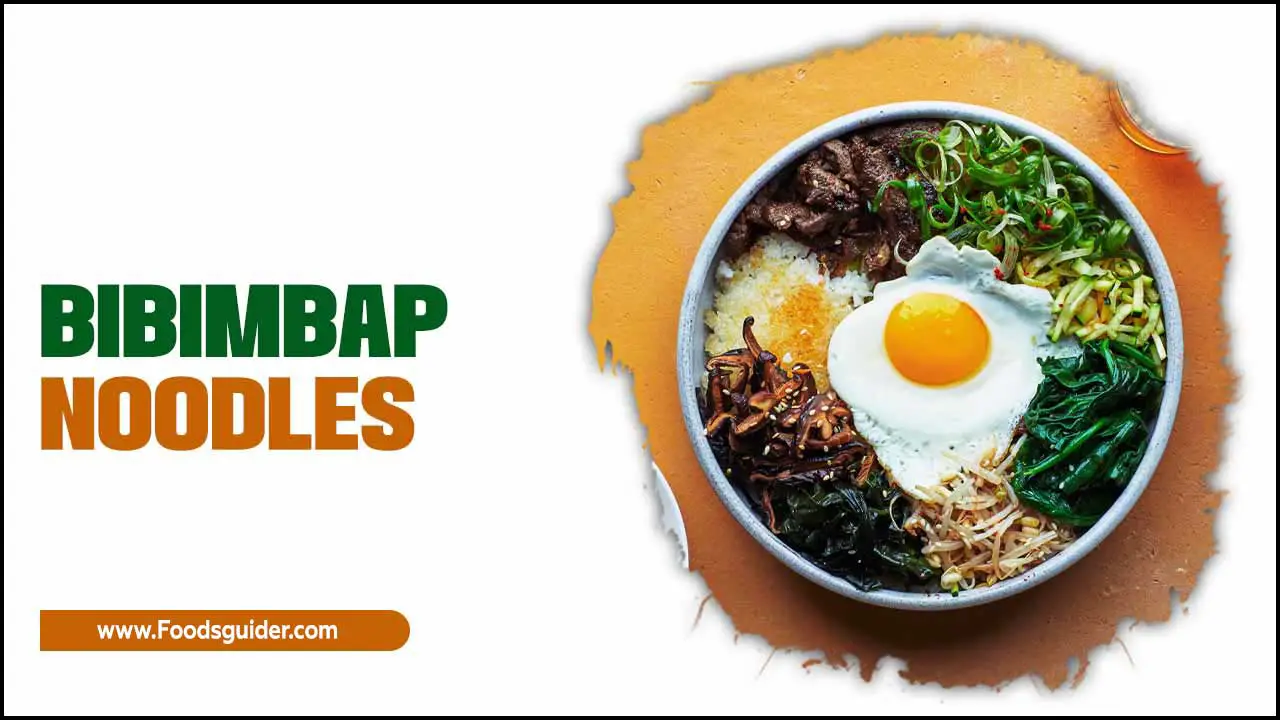
What Is Bibimbap Noodles?
Bibimbap noodles are a delicious Korean dish that has gained popularity worldwide. Bibimbap literally means “mixed rice” in Korean, and the dish is made with rice, vegetables, protein, and a spicy sauce. The noodles version of bibimbap is a creative twist on the classic dish, which replaces the rice with thin, chewy noodles made from sweet potato starch. The result is a satisfying, flavorful, filling, and nutritious meal.
To make bibimbap noodles, the first step is to cook them according to the package instructions and rinse them under cold water to stop the cooking process. Next, vegetables such as carrots, spinach, bean sprouts, and mushrooms are sautéed or blanched and arranged on top of the noodles.
How To Make Bibimbap Noodles Recipe – Explain In Detail
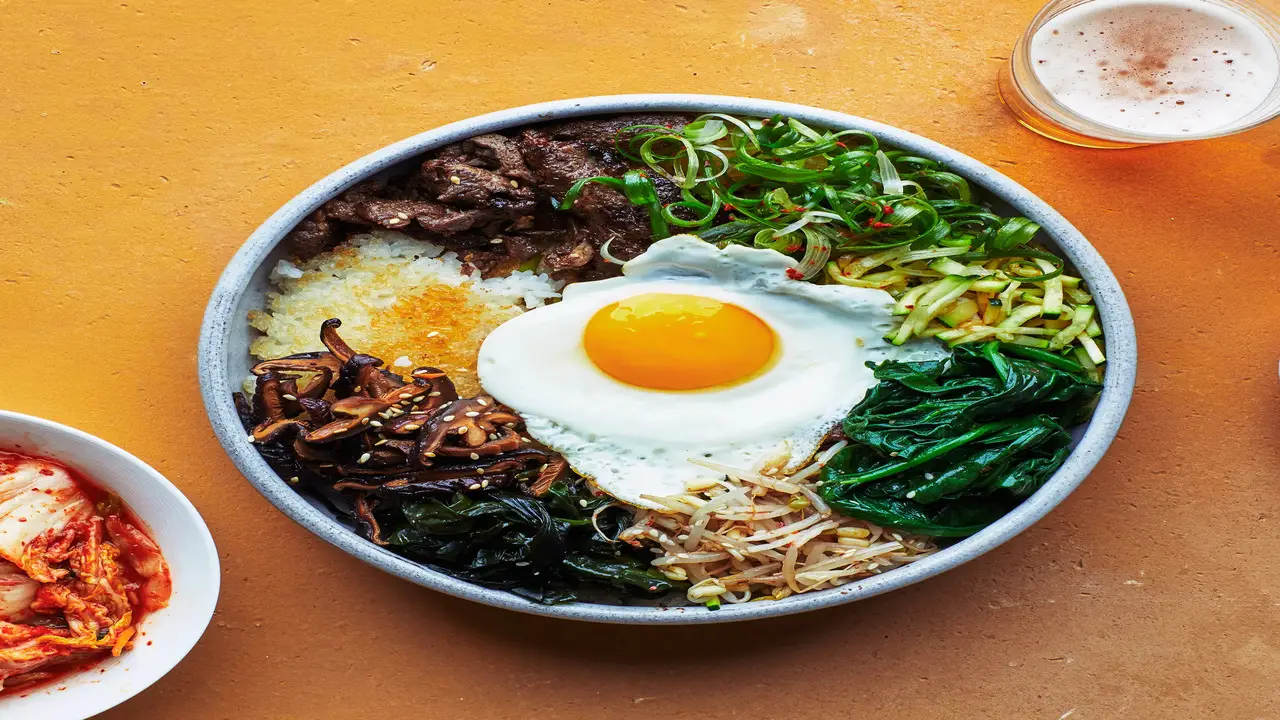
Bibimbap is a popular Korean dish that consists of rice topped with various vegetables, meat, and sometimes a fried egg. However, there are many variations of bibimbap, and one of the most delicious is bibimbap noodles. This version of the dish swaps out the rice for noodles, adding an extra layer of texture and flavour.
People typically stir-fry the noodles with a mix of vegetables like carrots, spinach, and bean sprouts and season them with a spicy sauce made from gochujang, a Korean chilli paste. People often top the dish with thinly sliced beef or chicken, which can also be vegetarian or vegan.
The key to great bibimbap noodles is to ensure that the vegetables are cooked just right, still slightly crunchy, and the sauce has the perfect balance of sweet, spicy, and savoury. It’s a hearty and satisfying dish that can enjoy any time of the day, whether you’re looking for a quick lunch.
Ingredients
People in Korea enjoy Bibimbap noodles for their delicious taste and healthy ingredients. To make this dish, they serve various vegetables and meat on top of a bed of rice noodles. Some essential ingredients in bibimbap noodles include carrots, spinach, bean sprouts, mushrooms, and meat such as beef or chicken.
The dish is a perfect blend of flavours and textures, with the vegetables providing a crunchy texture and the meat adding a savoury taste. The noodles are also a great addition to the dish, providing a chewy and filling base.
Before we dive into the cooking process, let’s gather the ingredients needed to make Bibimbap Noodles:
- 8 ounces of Korean sweet potato noodles (naengmyeon)
- 1 cup of protein (chicken, beef, or tofu), thinly sliced
- 2 tablespoons of vegetable oil
- 2 cups of spinach, blanched and seasoned with salt and sesame oil
- 2 cups of bean sprouts, blanched and seasoned with salt and sesame oil
- 1 carrot, julienned
- 1 zucchini, julienned
- 4 shiitake mushrooms, thinly sliced
- 1 cup of cucumber, julienned
- 4 cloves of garlic, minced
- 4 large eggs
- Sesame seeds and sliced green onions for garnish
Preparing The Bibimbap Noodles
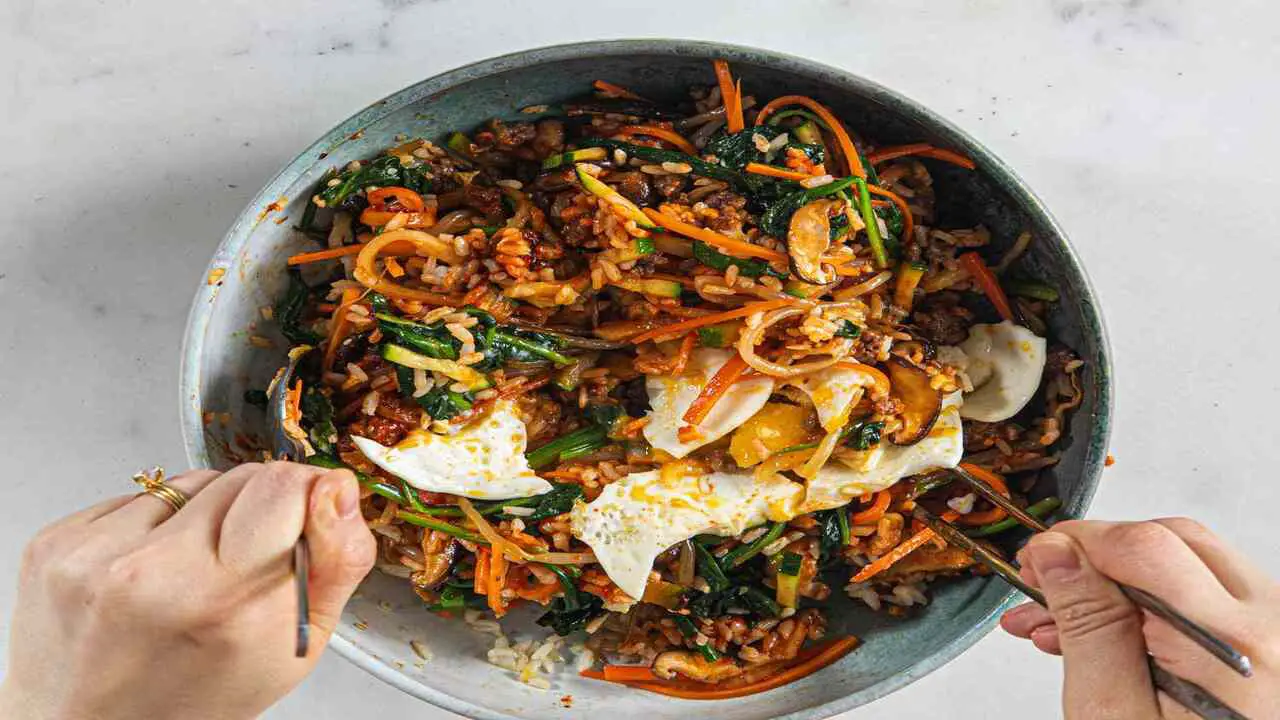
Bibimbap noodles are a popular Korean dish that combines various flavours and textures in one bowl. Preparing the bibimbap noodles is a crucial step in creating this delicious dish. To start, you must cook the noodles according to the package instructions. Once cooked, rinse the noodles under cold water to remove any excess starch and prevent them from sticking together.
1.Cooking The Noodles
The first step in creating Bibimbap Noodles is perfectly cooking sweet potato noodles. Follow these simple instructions:
- Bring a large pot of water to a boil.
- Add the sweet potato noodles and cook for 5-7 minutes or until they are soft and chewy.
- Drain the noodles and rinse them under cold water to prevent them from sticking together.
2.Making The Bibimbap Sauce
The Bibimbap Sauce is the heart of this dish, providing it with its signature umami flavour. Here’s how to prepare it:
- In a small bowl, mix 3 tablespoons of gochujang (Korean red pepper paste), 2 tablespoons of soy sauce, 1 tablespoon of sesame oil, 1 tablespoon of honey, and 1 tablespoon of rice vinegar.
- Stir in the minced garlic until you have a well-combined sauce.
3.Preparing The Vegetables
To complete the ensemble of colours and flavours, prepare the vegetables as follows:
- In a pan, heat 1 tablespoon of vegetable oil over medium heat.
- Stir-fry the protein (chicken, beef, or tofu) until cooked and lightly browned.
- In the same pan, add the sliced shiitake mushrooms and sauté until tender.
- Heat 1 tablespoon of vegetable oil in another pan and stir-fry the carrot and zucchini until slightly softened.
- Briefly sauté the blanched spinach and bean sprouts with a sprinkle of salt and sesame oil in a separate pan.
Assembling The Bibimbap Noodles
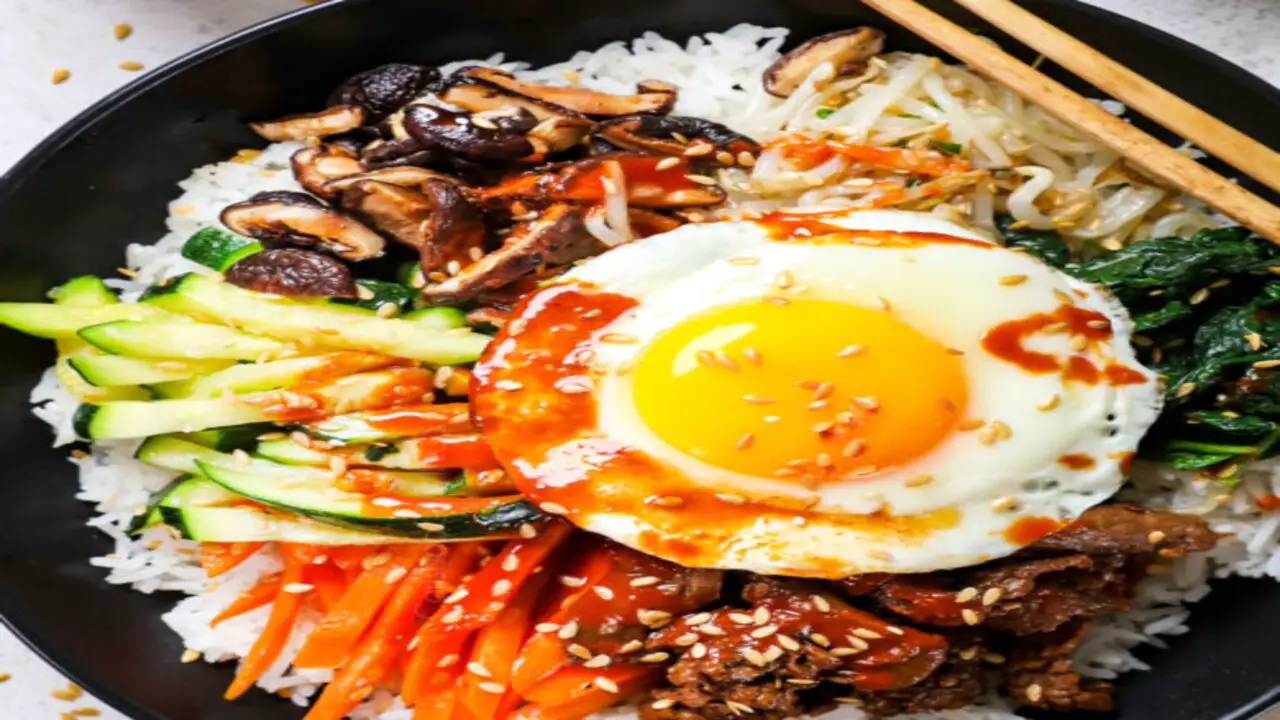
Assembling the Bibimbap noodles is an art form that requires precision and creativity. Bibimbap noodles are a popular Korean dish with a colourful array of vegetables, meat, and rice; all topped with an egg and a spicy sauce. The noodles are typically made from rice, soaked in water, ground into a fine powder, and formed into long, thin strands. Once cooked, the noodles are mixed with various vegetables, such as carrots, cucumbers, spinach, beef, tofu, or other proteins.
One must first arrange the ingredients visually pleasingly to assemble the perfect Bibimbap noodles. This can do by placing the vegetables and meat in separate sections of the bowl or arranging them in a circular pattern around the rice. The egg can poach or Fri and place on the dish, while the spicy sauce drizzles over everything to add flavour.
Serving And Enjoying
Bibimbap noodles are a delicious and filling dish perfect for any occasion. This Korean-inspired dish is a colourful and flavorful combination of rice, vegetables, meat, and a spicy sauce. Serving bibimbap noodles is a delight, as the dish is traditionally presented in a hot stone bowl, with the ingredients arranged artfully on top of the rice. Diners can then mix the ingredients together, creating a unique and satisfying flavour combination with every bite.
Enjoying bibimbap noodles is easy, as the dish is perfect for various eating styles. Meat lovers can enjoy the dish with beef, chicken, or pork, while vegetarians can indulge in fresh vegetables and tofu. The spicy sauce adds a kick of heat, while the rice and noodles provide a filling base.
Variations Of Bibimbap Noodles
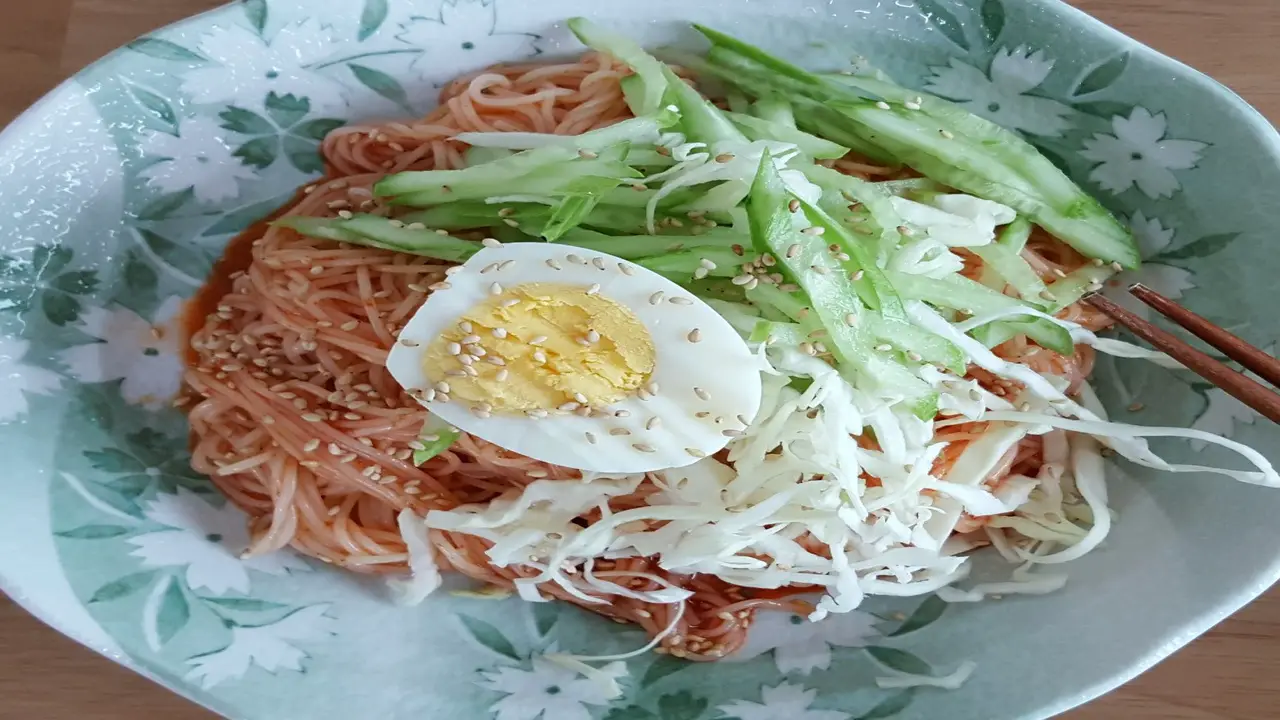
Bibimbap noodles are a popular Korean dish that has become increasingly popular worldwide. The dish is a bowl of mixed ingredients, including vegetables, protein, and fried egg, served on top of a bed of rice and mixed with a spicy sauce.
However, depending on where you go in Korea, many variations of Bibimbap noodles vary in flavour, ingredients, and presentation. Some popular variations include Jeonju Bibimbap, made with various vegetables and beef and served in a hot stone bowl to keep the dish warm. Another variation is Dolsot Bibimbap, made with various vegetables and beef and served in a hot stone bowl to keep the dish warm.
Health Benefits Of Bibimbap Noodles

Bibimbap noodles are a popular Korean dish that is tasty and has several health benefits. The dish typically includes a mix of vegetables, rice, and protein; all served over delicious noodles. One of the many advantages of bibimbap noodles is that they are rich in fibre, which can help improve digestion, regulate blood sugar levels, and reduce the risk of developing heart disease.
Additionally, bibimbap noodles contain various vitamins, minerals, and antioxidants. The vegetables in the dish, such as carrots, spinach, and bean sprouts, are packed with essential nutrients that can help boost the immune system and improve overall health. Moreover, bibimbap noodles are a great source of protein, especially if you add meat or tofu to your dish. Protein is essential for building and repairing tissues in the body and maintaining healthy bones, muscles, and skin.
Conclusion
Bibimbap is a Korean dish known for its colourful and nutritious ingredients. It is typically served in a bowl with rice, vegetables, and meat, topped with an egg and spicy sauce. However, there are many variations of bibimbap depending on the region and personal preference.
One popular variation is bibimbap noodles, which replace the rice with thin and chewy noodles. Fusion of Korean and Chinese cuisines, and they are absolutely delicious. From the chewy texture of the noodles to the crispy vegetables and savoury sauce, every bite is a flavour explosion.
FAQs
1.What Are Bibimbap Noodles, And How Are They Different From Other Noodles?
Ans: There is no such thing as bibimbap noodles. Bibimbap is a Korean mixed rice dish that typically includes vegetables, meat, and a fried egg, served with gochujang sauce.
2.What Are The Traditional Ingredients In A Bibimbap Noodle Dish?
Ans: Bibimbap is a Korean dish that typically includes a bowl of rice, seasoned vegetables, meat, and a fried egg. However, it does not usually include noodles. Noodle dishes like Japchae may include sweet potato noodles, vegetables, and meat.
3.How Are Bibimbap Noodles Prepared And Cooked?
Ans: Bibimbap is generally not prepared with noodles but with rice and various vegetables, meat, and sometimes egg. To prepare bi bim guksu, the noodles are first cooked in boiling water until tender, then drained and rinsed with cold water.
4.Can Bibimbap Noodles Customize To Suit Different Dietary Preferences Or Restrictions?
Ans: Bibimbap noodles can customize to suit different dietary preferences or restrictions. For example, vegetarians can substitute meat with tofu or additional vegetables. For gluten-free people, rice noodles can be handy instead of wheat noodles. It is also possible to adjust the level of spiciness or omit certain ingredients based on personal preferences or allergies.
5.What Are Some Popular Variations Of Bibimbap Noodles Found In Different Regions Of Korea?
Ans: Bibimbap is actually a rice dish, not a noodle dish. However, there are various regional variations of bibimbap in Korea, such as Jeonju bibimbap, Jinju bibimbap, and Tongyeong bibimbap. These variations differ in ingredients and preparation methods, typically including vegetables, meat, and a spicy chilli sauce.
